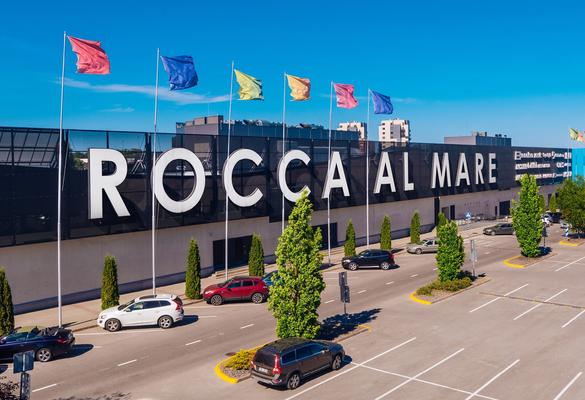
Do you know the "hills" of Tallinn?
22.04.2020
Estonia is a flat country, unless you consider Suur Munamägi (‘Big Egg Hill’, 318 metres) in the southeastern region of the country. Tallinn is also flat, but people sometimes speak about ‘the hills of Tallinn’. Where are they and what are they?
Almost half of the city’s population of 450,500 (2018) people live in the large city districts that are sometimes called the dormitories and also known as the ‘hills’ (the word ‘mäe’ in their names comes from the Estonian word ‘mägi’, which means ‘mountain’ or ‘hill’). This is why the ‘hills’ are excellent places to visit for those who are interested in the lives of ‘ordinary Tallinners’.
The hills are easy to get to by bus or trolleybus. You can use public transport free of charge if you’ve purchased a Tallinn Card.
Mustamäe
Mustamäe is oldest of the hills and is currently home to 68,000 (2018) Tallinners. The blocks of flats in Mustamäe were built in the 1960s and 1970s, and Finnish builders also helped with the construction.
Fortunately, some parks were also left between the large standard Soviet houses. The biggest park is Männipark (Pine Park), which characterises the whole of Mustamäe very well: you can see more conifers, especially pines, here than in any other district of the city. You can go to the Parditiigi park (Duck Pond Park) where you can see mallards swimming in the man-made pond. Both parks boast sculptures by the well-known sculptor Tauno Kangro.
The shopping centres with their bars and cafes that are frequented by the Mustamäe locals are an experience in their own right for tourists. You can have the most enjoyable shopping experience in the recently opened Mustamäe Keskus. Not far from there, on Kadaka tee, Uulits offers street food and is known for its hamburgers and wraps.
It is easy to travel direct from Mustamäe to the other larger district, Väike-Õismäe, which was built in the 1970s and 1980s.
Väike-Õismäe
Väike-Õismäe is currently home to 46,000 (2018) people and the blocks of flats there have all been built around a central point - the circular man-made pond. The large roundabout makes this region easy to recognise on the maps of Tallinn. The biggest residential building in Tallinn, the nine-storey ‘Great Wall of China’ is located on the roundabout, at the address Õismäe 136-150.
Väike-Õismäe is also known for its varied entertainment. The residents at Tallinn Zoo include polar bears and elephants, while across the road are the huge Rocca al Mare Shopping Centre and the concert and event venue Saku Suurhall Arena. Next to the latter is the Škoda Ice Arena, which focuses on skating and offers everyone an opportunity to engage in the sport, or even organise ice discos. The family bowling and pool hall Al Mare Bowling is just a short walk from here.
When you get hungry, you can go to Al Mare Grill next to the shopping centres, where you can enjoy grilled food and pizza. The French-style Café Lyon next to the blocks of flats, the Italian restaurant Rucola, and 22 Family Resto are also highly-esteemed restaurants.
Lasnamäe
The construction of Lasnamäe started in the 1970s and it is still ongoing. Even though its reputation is not the best, it is actually a peaceful district that is home to 120,000 (2018) people. It covers approximately one-fifth of the territory of Tallinn. Lasnamäe is Tallinn’s biggest residential district with a mostly Russian-speaking population - Russian is the native language of two-thirds of the people living there.
Lasnamäe is cut in half by Laagna Road - a tunnel and motorway lined by Tallinn’s most massive blocks of flats on both sides. Many buses that head from the city centre to Lasnamäe use this route.
The service centre Lasnamäe Keskus is located near the Paesilla bus stop, but if you get off at the Kotka kauplus bus stop, you can go and enjoy some great flavours at the Korean restaurant Annön. The food in this modest restaurant in the basement of a block of flats is delicious and affordable. The large shopping centres of Tähesaju City and Lasnamäe Centrum are located near the Taevakivi bus stop.
Those who are interested in sacral art should head for Tallinn’s newest Orthodox church - the Church of the "Quick to Hearken" Icon of the Mother of God in the eastern part of Lasnamäe.
On the other side of Lasnamäe is Jüriöö Park (St George’s Night Park), which is like a textbook of earlier Estonian history. The decisive battle between the forces of the Masters of the Livonian Order and the army of the Estonians was held at the highest point of Tallinn, Sõjamäe, in 1343. In addition to these, there is a memorial in the park to those who fell in the Estonian War of Independence and World War II.
The mood is much brighter at the Tallinn Song Festival Grounds, located right next to Lasnamäe and the grand Kadriorg Park. It was under this arch that the Estonians sang themselves free for good. In addition to the song festivals held here every five years, the grounds are also a popular venue for sports and open-air events.










